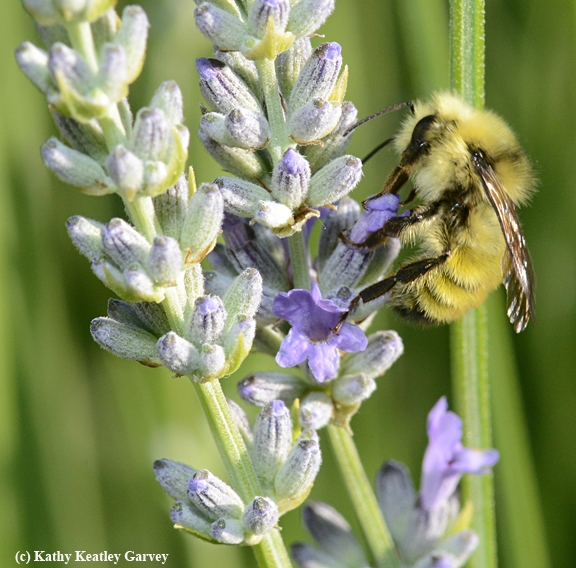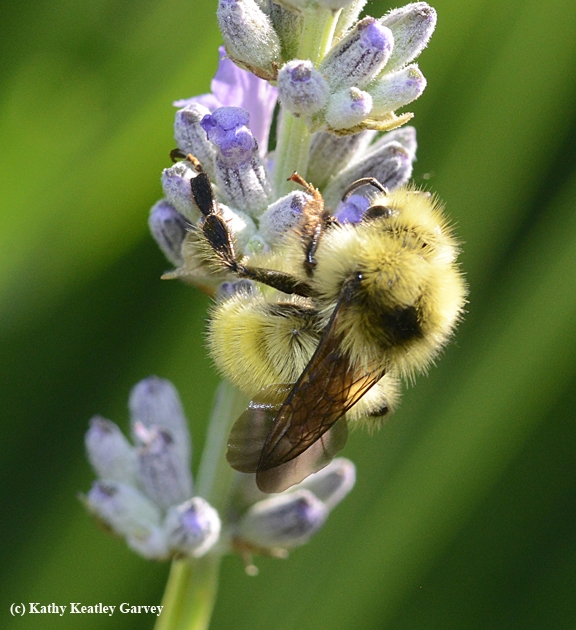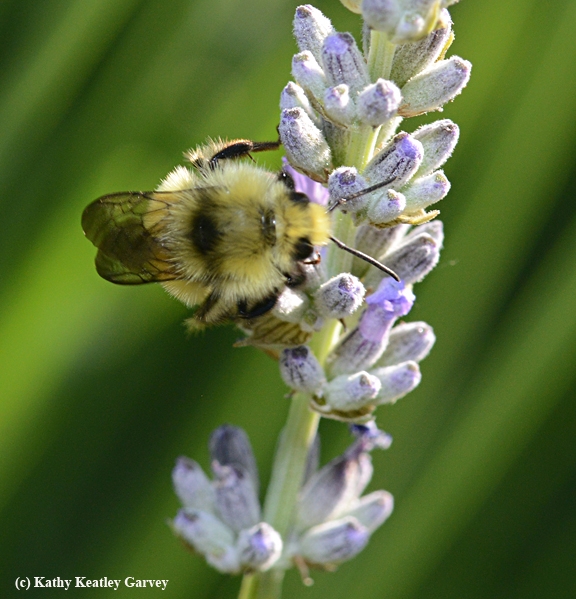It's so blond that all you can say is "Wow!" It's sort of like the Reese Witherspoon of bumble bees. But then the gender doesn't match. Okay, the Owen Wilson of bumble bees.
The male Bombus vandykei, commonly called "The Van Dyke Bumble Bee," is a treasure for three reasons, not necessarily in this order: (1) it's a pollinator (2) it's a bumble bee and (3) it's the color of golden wheat.
We spotted a male Bombus vandykei foraging in our lavender patch last night around 6. Its color reminded us of two other bees: the male Valley carpenter bee (Xylocopa varipuncta), a green-eyed blond bee nicknamed "The Teddy Bear Bee"; and the blondest of the blond honey bees, the Italian Cordovan. The Italian, Apis mellifera ligustica, is a subspecies of the European or Western honey bee, Apis mellifera.
The Van Dyke Bumble Bee gets around. The species is found in the Pacific Coastal states, including Washington, Oregon and California. The boys are extensively blond, but the girls aren't. In fact, the females are often confused with the yellow-faced bumble bee, Bombus vosnesenskii, and the black-faced bee, Bombus californicus.
Bombus vandykei is one of about 250 described species of bumble bees worldwide. All belong to the genus, Bombus.
Want to know more about bumble bees and how to identify them? Be sure to pick up a copy of Bumble Bees of North America: An Identification Guide (Princeton University Press), co-authored by bumble bee expert Robbin Thorp, distinguished emeritus professor of entomology at UC Davis, and fellow scientists Paul Williams, Leif Richardson and Sheila Colla. It won a 2015 Outstanding Reference Sources Award, Reference and User Services Association, American Library Association.
If you click on the Princeton University link, http://press.princeton.edu/titles/10219.html, you'll hear the buzz. That's the buzz of bumble bees beckoning us to listen to them.
Attached Images:

A male Bombus vandykei,also known as the Van Dyke Bumble Bee, forages on lavender in Vacaville, Calif. on May 17. (Photo by Kathy Keatley Garvey)

A natural blond! A male bumble bee known as the Van Dyke Bumble Bee, Bombus vandykei, sips nectar from lavender. (Photo by Kathy Keatley Garvey)

A dorsal view of the male bumble bee, Bombus vandykei, foraging on lavender. (Photo by Kathy Keatley Garvey)